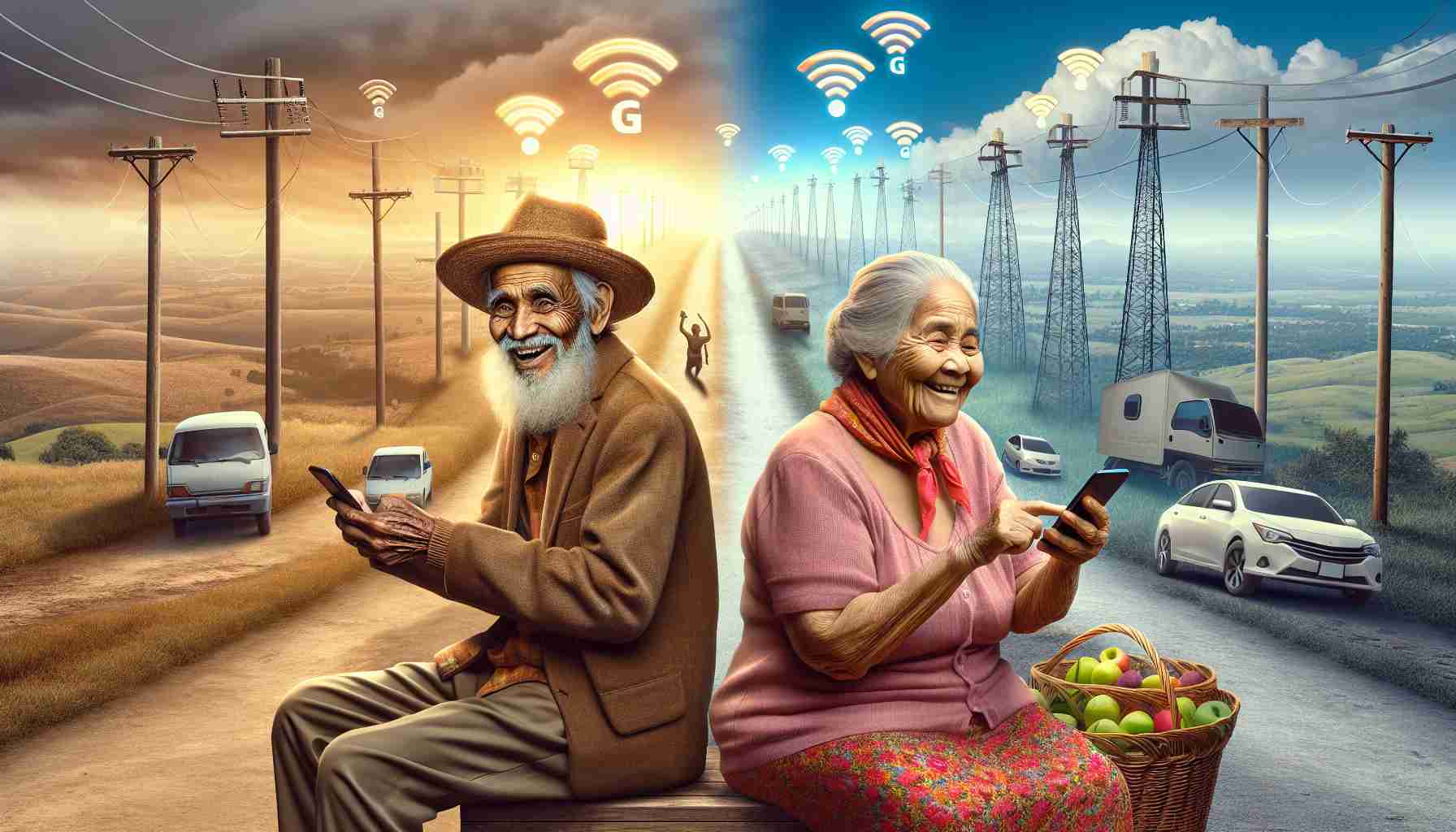In the modern age, the rapid development of information technology has seen a gradual shift from 2G to advanced mobile technologies like 4G and 5G becoming a global trend. However, not everyone finds it easy to access and adapt to this change.
Statistics show that a significant number of current 2G users are the elderly, people residing in remote rural areas, and young children who are provided with basic “brick” phones by their parents for essential communication needs.
Particularly, the elderly are among the most vulnerable groups during technology transitions. This is not only due to potential difficulty in grasping and utilizing new technologies but also the lack of support and resources to upgrade devices or learn about new technology.
According to the Department of Information and Communications, in Son La province, over 22,800 households, accounting for 7.4% of the population, are not using smartphones, with more than 8,700 households still using 2G mobile phones and 14,133 households lacking mobile phones.
Transitioning from 2G to 4G: A Journey for the Elderly and Mountainous Regions
To ensure that no one is left behind, in line with the roadmap set by the Ministry of Information and Communications to cease 2G technology by September 2024 at the latest, network providers have introduced a range of customer support solutions.
As a major player in the telecommunications market, Viettel Telecom, a subsidiary of Viettel Group, is making efforts to migrate all customers from 2G to 4G to synchronize with the digital life.
Viettel is striving to accompany people in the transition from 2G to 4G through various means.
However, Viettel is encountering several challenges during the transition. Nguyen Trong Tinh, Deputy General Director of Viettel Telecom, emphasized the difficulties faced by Viettel in transitioning from 2G to more advanced mobile technologies, mainly because 2G users are primarily rural and mountainous residents with limited access to information.
Furthermore, economic barriers are also a significant issue, as the cost of a smartphone, while not high, is still a hindrance for low-income individuals. Moreover, the market still has many unauthorized 2G subscriber points, leading customers seeking an upgrade to potentially purchase outdated devices.
Overcoming these challenges, Viettel has been implementing various solutions, notably providing IT training programs for the elderly to enhance their skills in using modern mobile devices.
Viettel has initiated several special support programs to encourage customers to transition from 2G to 4G. For instance, customers can receive a free 4G smartphone when committing to using Viettel’s packages for at least six months.
Samsung Galaxy A04e and Samsung Galaxy A05 are available at discounted prices of 1,090,000 VND and 1,490,000 VND, respectively.
Not only that, Viettel is also offering a 50% discount on selected Samsung phone models like the Samsung Galaxy A05, priced at 1,490,000 VND.
Additionally, in the second quarter of 2024, Viettel will provide up to 1,000,000 VND in support for customers purchasing a 4G smartphone along with data-rich mobile packages, facilitating easy and cost-effective access to modern technology.
Thanks to these efforts, the elderly and residents in remote areas not only benefit from the conveniences of 4G technology but also overcome initial barriers to become proficient technology users, integrating more effectively into the connected world.
4G is gradually infiltrating the lives of Vietnamese people and becoming an indispensable part of their daily routines.
The development of mobile technology from 2G to 4G has been an impressive journey, with each generation of technology bringing optimal improvements to enhance communication methods and provide a digital lifestyle experience for users.
The introduction of 2G in the early 1990s revolutionized communication and began the evolution toward a more connected world.
The Advancement from 2G to 4G: Bridging Gaps for Rural Areas and the Elderly
As the world transitions towards more advanced mobile technologies like 4G and beyond, specific demographic groups face unique challenges in adapting to these changes. While the previous article touched on the difficulties encountered by the elderly and residents in remote areas during this transition, there are other crucial aspects to consider.
Key Questions and Answers:
1. How important is it to bridge the digital gap for rural areas and the elderly?
Empowering rural areas and the elderly with access to 4G connectivity is crucial for their inclusion in the digital era, ensuring they can benefit from modern advancements and opportunities.
2. What are the main challenges associated with transitioning to 4G for these demographics?
The primary challenges include lack of technical knowledge among the elderly, economic barriers to purchasing smartphones, and limited access to information in remote areas.
Advantages and Disadvantages:
Transitioning from 2G to 4G offers numerous advantages, such as faster internet speeds, enhanced connectivity, and access to a wider range of digital services. However, some disadvantages include the initial cost of upgrading devices and the need for ongoing digital literacy support, especially for the elderly.
Related Links:
Government of Vietnam
Viettel Telecom
By addressing these challenges and providing tailored solutions, stakeholders can ensure that rural areas and the elderly are not left behind in the digital revolution. The efforts to empower these communities with 4G technology will pave the way for a more inclusive and connected society, where everyone can reap the benefits of technological advancements.























